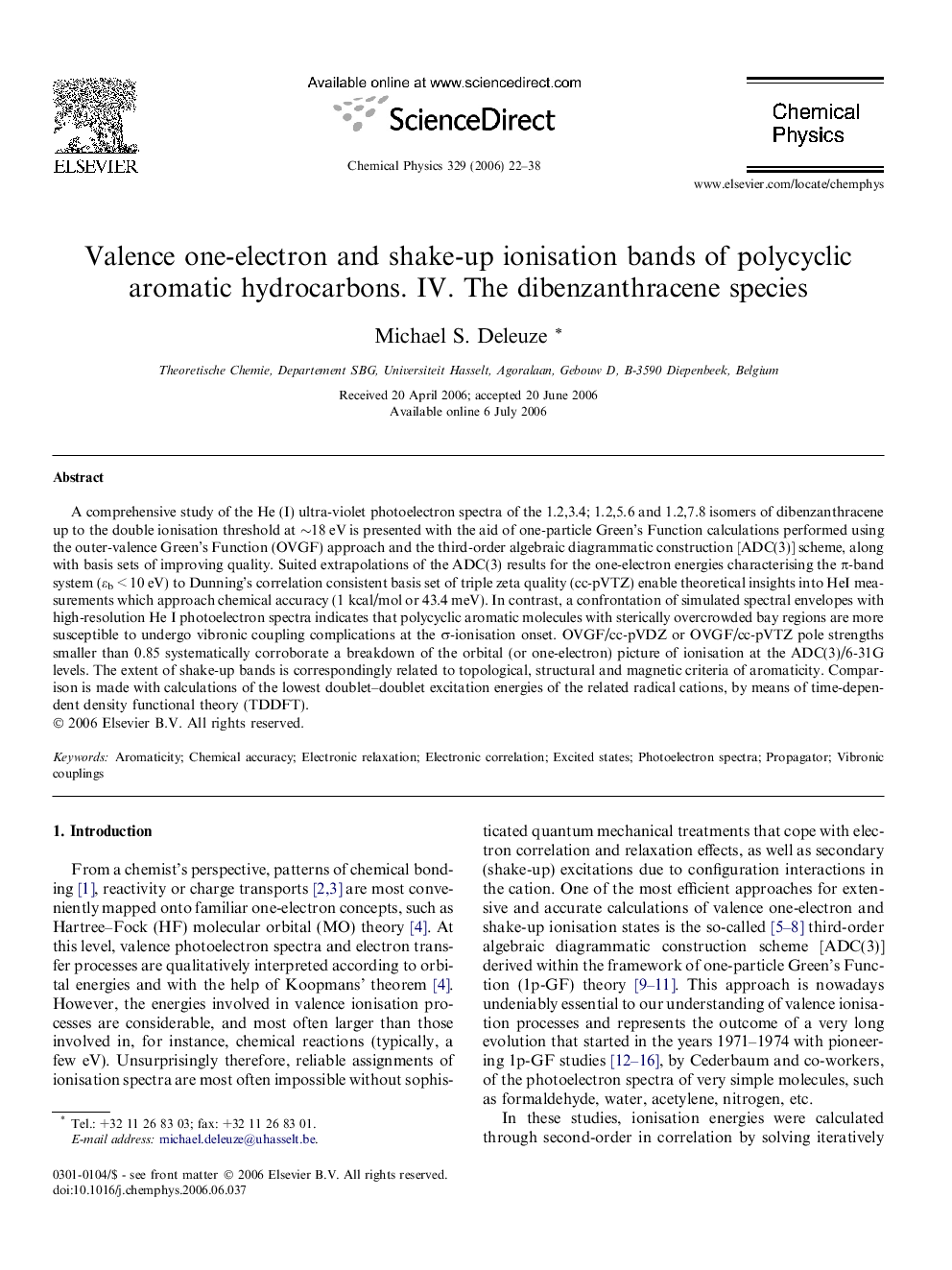| Article ID | Journal | Published Year | Pages | File Type |
|---|---|---|---|---|
| 5376786 | Chemical Physics | 2006 | 17 Pages |
Abstract
A comprehensive study of the He (I) ultra-violet photoelectron spectra of the 1.2,3.4; 1.2,5.6 and 1.2,7.8 isomers of dibenzanthracene up to the double ionisation threshold at â¼18 eV is presented with the aid of one-particle Green's Function calculations performed using the outer-valence Green's Function (OVGF) approach and the third-order algebraic diagrammatic construction [ADC(3)] scheme, along with basis sets of improving quality. Suited extrapolations of the ADC(3) results for the one-electron energies characterising the Ï-band system (εb < 10 eV) to Dunning's correlation consistent basis set of triple zeta quality (cc-pVTZ) enable theoretical insights into HeI measurements which approach chemical accuracy (1 kcal/mol or 43.4 meV). In contrast, a confrontation of simulated spectral envelopes with high-resolution He I photoelectron spectra indicates that polycyclic aromatic molecules with sterically overcrowded bay regions are more susceptible to undergo vibronic coupling complications at the Ï-ionisation onset. OVGF/cc-pVDZ or OVGF/cc-pVTZ pole strengths smaller than 0.85 systematically corroborate a breakdown of the orbital (or one-electron) picture of ionisation at the ADC(3)/6-31G levels. The extent of shake-up bands is correspondingly related to topological, structural and magnetic criteria of aromaticity. Comparison is made with calculations of the lowest doublet-doublet excitation energies of the related radical cations, by means of time-dependent density functional theory (TDDFT).
Keywords
Related Topics
Physical Sciences and Engineering
Chemistry
Physical and Theoretical Chemistry
Authors
Michael S. Deleuze,
